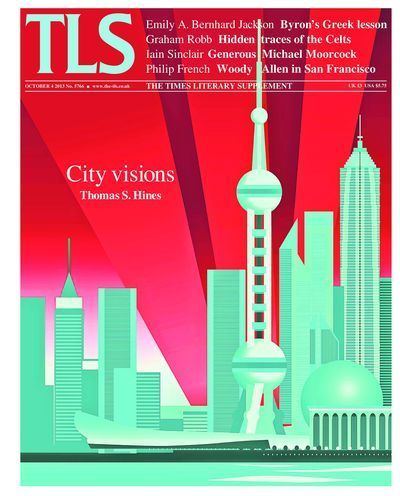In this week’s TLS – a note from the History editor

The human impulse to impose ourselves on our environment has inspired men and
women to build cities, to erect monuments, or to incorporate the animal
kingdom into our own rituals. This week, Thomas S. Hines considers a book by
Daniel Brook that takes four grand urban visions of the future, and sees how
they resulted in “four cities that would come to look and be like no others
in their surrounding cultures”. These versions of modernity all reimagined
western models in eastern settings. In Shanghai, the aim was to create “a
western city that just happened to be in the Far East”, whereas in Bombay –
the name the Portuguese coined, only replaced by the Indian version in the
1990s – the project was directed at the native, not the expatriate
population, to “create a new man who looked like an Indian but thought like
a Briton”. Such epic flights of fancy made victims, from the thousands of
serfs who died to build St Petersburg to the “coolies” on whose backs
Shanghai rose. But they also represented the birth pangs of a mixed, messy
modernity.
In Commentary, Graham Robb reveals a very different record of human
interaction with the landscape, one which, far from transforming it, “for
much of its course . . . exists only as an abstraction, an ideal trajectory
joining various sites”. This is the fabled Via Heraklea, which Robb has
traced on map and by bike. Despite his best attempts to disprove it, the
route also seems to track the angle of the rising sun at the summer
solstice, the sort of discovery that makes a reputable scholar worry that he
is suffering from “historical hallucination”.
Human encounters with the natural world take any number of forms, but it can
be argued that we have assimilated birds into our lives more thoroughly than
any other animal. To English-speakers, as Jeremy Mynott points out, birds
allow us to crane our necks, crow over misfortune or swan around. But
throughout the world, whether in the rituals of the tribes of Papua New
Guinea or the battery farms of Europe, we live with and through birds.
Mynott praises a “major literary event as well as an ornithological one” in
Mark Cocker and David Tipling’s Birds
and People.
David Horspool
Peter Stothard's Blog
- Peter Stothard's profile
- 30 followers



